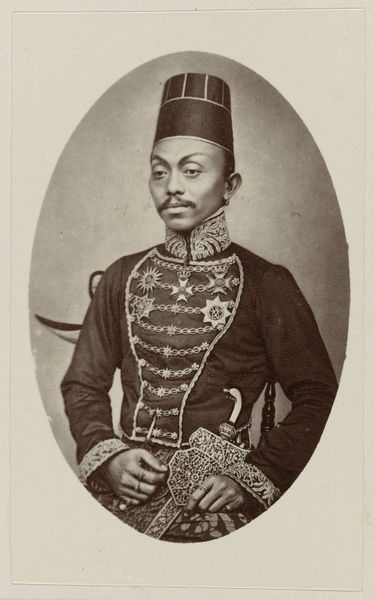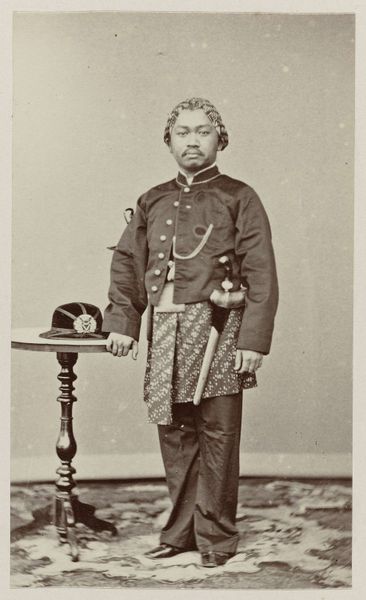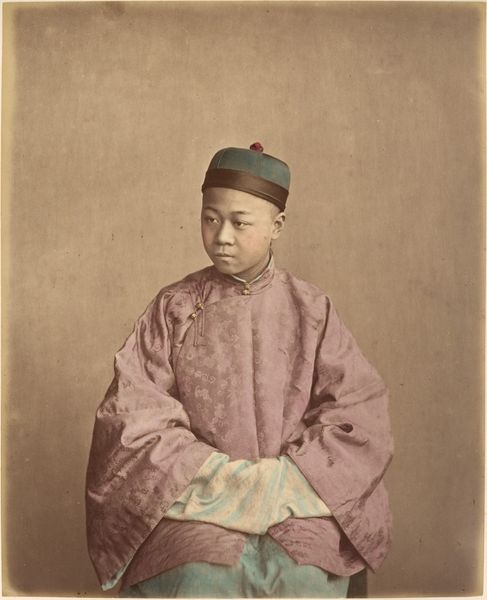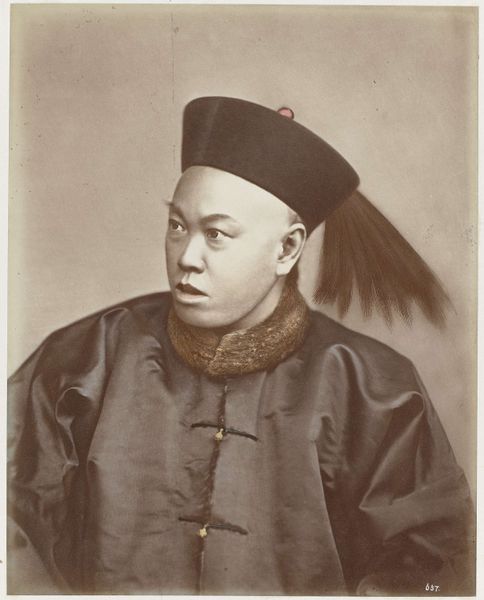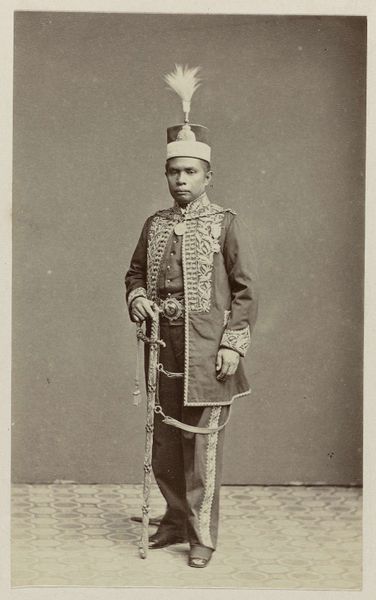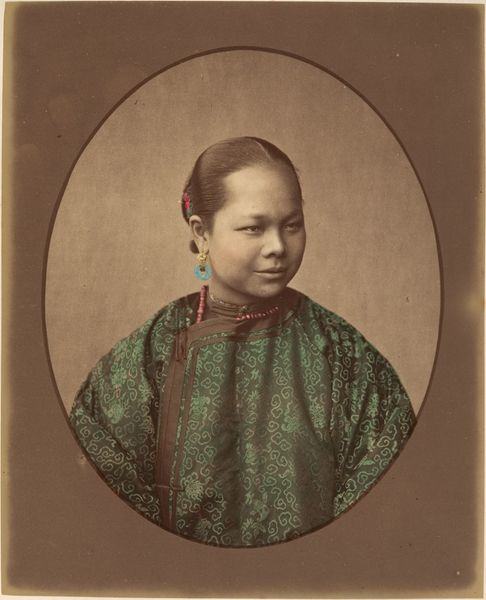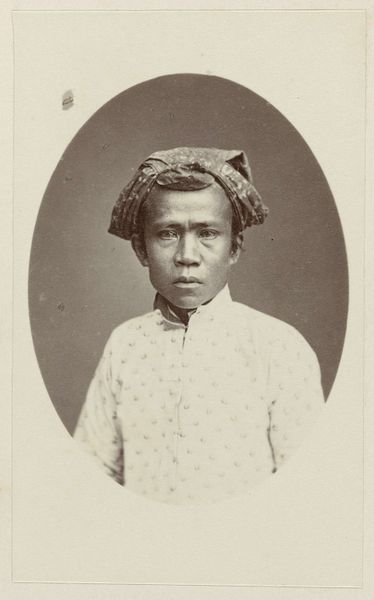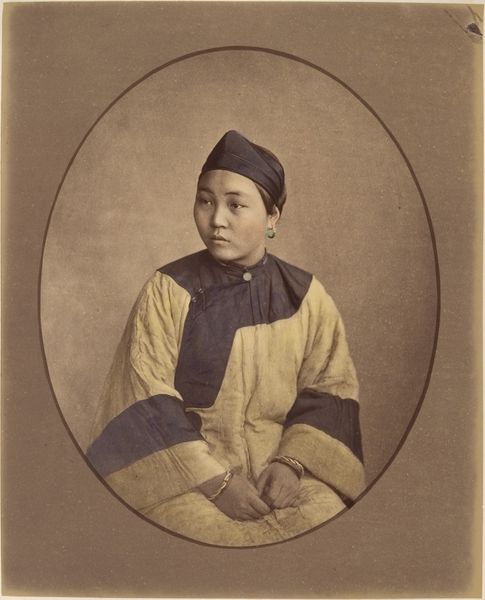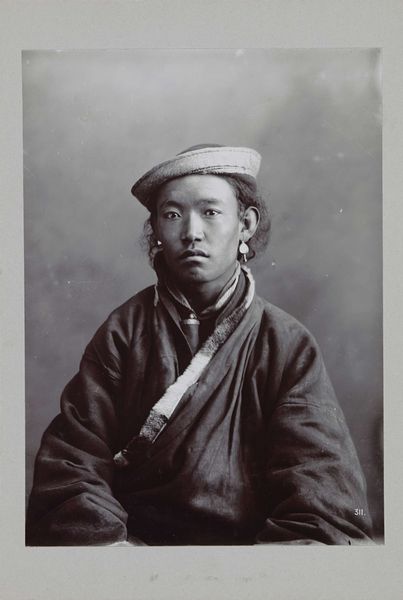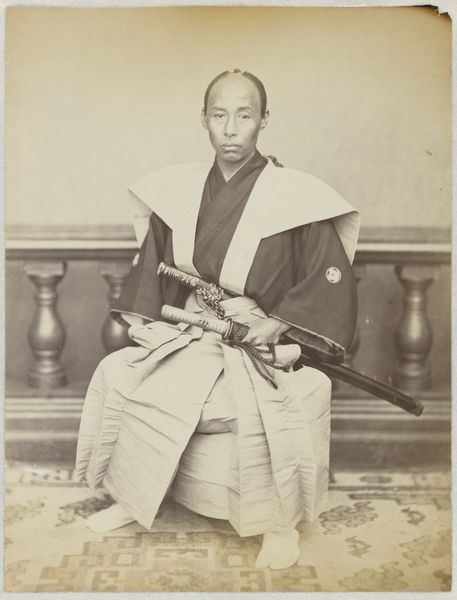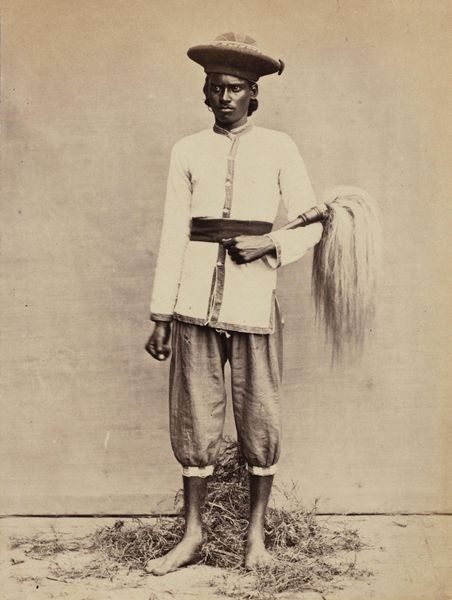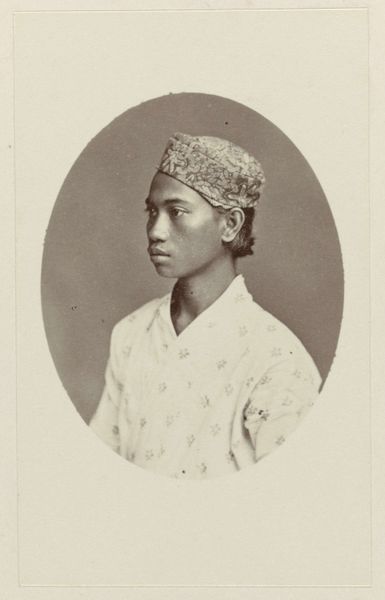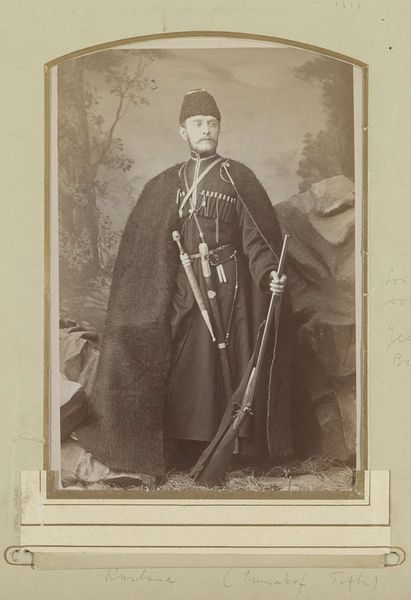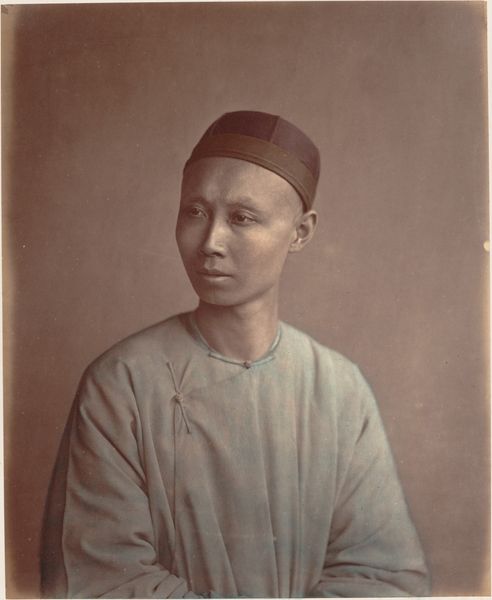
photography, albumen-print
#
portrait
#
asian-art
#
photography
#
albumen-print
Dimensions: height 95 mm, width 55 mm
Copyright: Rijks Museum: Open Domain
Curator: Standing before us is an albumen print from between 1868 and 1872 by Woodbury & Page, a portrait titled "Pakoe Boewono IX, Susuhunan van Surakarta." Editor: He's got a very intense stare, almost like he's peering right through me! It's a striking composition, with a narrow depth of field, really focusing your eye on his face and that…regal headpiece. Curator: The gaze is captivating, isn’t it? These albumen prints were incredibly popular then for capturing ethnographic studies and portraits of nobility. This image of Pakoe Boewono IX serves as both, demonstrating the European fascination with Javanese aristocracy under Dutch colonial rule. The sharp detail comes from a technique known as collodion wet plate photography. Editor: Oh, so there was a lot of technology involved with this shot back then. It feels very different than if this were done today, with something more instantaneous and digital. Look at the details of the clothing! It’s fascinating what can be picked up on so precisely. But in his expression I see some ambivalence in this portrait; a sense of caution in the eyes… or is that just me? Curator: No, I agree. The political complexities were substantial. The Dutch sought to legitimize their rule by showcasing the power—and implicitly, the acquiescence—of local rulers like Pakoe Boewono IX, yet these very images also fostered a sense of Javanese cultural pride and identity. So it represents an attempt at preservation amid political power struggles. The gaze may show the weight and understanding of a careful political negotiation during that time. Editor: I never thought about photography in this way before. It’s not just about the person but about the whole set of relationships involved and the message conveyed, too. I feel I understand a piece of the Javanese culture now. This really is such an eloquent and engaging snapshot from a complex colonial intersection. Curator: Precisely, it's a window into a moment of immense cultural and political negotiation. The visual story speaks of imposed rule but also indigenous identity and how the technology became part of those negotiations.
Comments
No comments
Be the first to comment and join the conversation on the ultimate creative platform.
